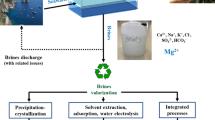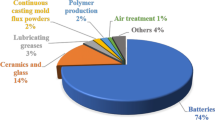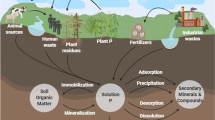Abstract
There are few efficient, rapid and cheap methods to remove toxic metals from contaminated waters. Here we hypothesised that cathodic protection, an existing method used to control the corrosion of metallic structures, may trap toxic metals. Indeed, in seawater, the application of a cathodic current on a metallic structure induces the precipitation of limestone (CaCO3) and magnesium dihydroxyde (Mg(OH)2), thus forming a calcareous deposit on the metal surface. We therefore presumed that such calcareous deposit may trap metals dissolved in waters. Actually calcareous deposit formation has never been studied in the presence of dissolved metallic contaminants such as nickel. Here we tested ionic nickel (Ni2+) precipitation in calcareous deposit with a galvanized steel electrode by spiking artificial seawater with a NiCl2 salt during 7 days of applied current. We analysed deposit surface and cross section by µ-Raman spectroscopy and scanning electron microscopy (SEM) with X-ray microanalysis. Ni concentration in the deposit was quantified by inductively coupled plasma analysis, after deposit dissolution in 60% HNO3. Results show that in 7 days up to 24% of nickel can be trapped in the calcareous deposit. Scanning electron microscopy reveals that Ni is trapped under a pure CaCO3 layer of aragonite. Raman spectra show that nickel is incorporated as nickel dihydroxyde (Ni(OH)2), as evidence by vibration bands at 446 and 510 cm−1. Overall our findings disclose a new and efficient method, calcareous electrochemical precipitation, which has potential applications to remove toxic metals from contaminated waters.




Similar content being viewed by others
References
Akcil A, Erust C, Ozdemiroglu S, Fonti V, Beolchini F (2015) A review of approaches and techniques used in aquatic contaminated sediments: metal removal and stabilization by chemical and biotechnological processes. J Clean Prod 86:24–36
Barchiche C, Deslouis C, Festy D, Gil O, Refait P, Touzain S, Tribollet B (2003) Characterization of calcareous deposits in artificial seawater by impedance techniques: 3-deposit of CaCO3 in the presence of Mg(II). Electrochim Acta 48(12):1645–1654
Board M (1997) Contaminated sediments in ports and waterways: cleanup strategies and technologies. National Academies Press, Washington
Bonnet X, Briand MJ, Brischoux F, Letourneur Y, Fauvel T, Bustamante P (2014) Anguilliform fish reveal large scale contamination by mine trace elements in the coral reefs of New Caledonia. Sci Total Environ 470:876–882
Chateigner D (2013) Combined analysis. Wiley, New York
Gabrielli C, Jaouhari R, Joiret S, Maurin G, Rousseau P (2003) Study of the electrochemical deposition of CaCO3 by in situ Raman spectroscopy I. Influence of the substrate. J Electrochem Soc 150(7):C478–C484
Gillet P, Biellmann C, Reynard B, McMillan P (1993) Raman spectroscopic studies of carbonates part I: high-pressure and high-temperature behaviour of calcite, magnesite, dolomite and aragonite. Phys Chem Miner 20(1):1–18
Gunkel-Grillon P, Laporte-Magoni C, Lemestre M, Bazire N (2014) Toxic chromium release from nickel mining sediments in surface waters, New Caledonia. Environ Chem Lett 12:511
Hong KS, Lee HM, Bae JS, Ha MG, Jin JS, Hong TE, Kim JP, Jeong ED (2011) Removal of heavy metal ions by using calcium carbonate extracted from starfish treated by protease and amylase. J Anal Sci Technol 2(2):75–82
Kumar KS, Dahms HU, Won EJ, Lee JS, Shin KH (2015) Microalgae—a promising tool for heavy metal remediation. Ecotoxicol Environ Saf 113:329–352
Maleki H (2016) Recent advances in aerogels for environmental remediation applications: a review. Chem Eng J 300:98–118
Marques CR (2016) Bio-rescue of marine environments: on the track of microbially-based metal/metalloid remediation. Sci Total Environ 565:165–180
Migon C, Ouillon S, Mari X, Nicolas E (2007) Geochemical and hydrodynamic constraints on the distribution of trace metal concentrations in the lagoon of Nouméa, New Caledonia. Estuar Coast Shelf Sci 74(4):756–765
Nan J, Yang Y, Lin Z (2006) In situ photoelectrochemistry and Raman spectroscopic characterization on the surface oxide film of nickel electrode in 30 wt% KOH solution. Electrochim Acta 51(23):4873–4879
Salomons W, Stigliani W (eds) (2012) Biogeodynamics of pollutants in soils and sediments: risk assessment of delayed and non-linear responses. Springer Science & Business Media, Berlin
Salvago G, Maffi S, Benedetti A, Magagnin L (2004) Coating electroaccretion on galvanized iron and aluminum in seawater. Electrochim Acta 50(1):169–178
Schweitzer GK, Pesterfield LL (2009) The aqueous chemistry of the elements. Oxford University Press, Oxford
Vasudevan S, Oturan MA (2014) Electrochemistry: as cause and cure in water pollution—an overview. Environ Chem Lett 12(1):97–108
Acknowledgements
This research was supported by the French National Research Agency (ANR-EcoCorail program: MATETPRO project).
Author information
Authors and Affiliations
Corresponding author
Rights and permissions
About this article
Cite this article
Carré, C., Gunkel-Grillon, P., Serres, A. et al. Calcareous electrochemical precipitation, a new method to trap nickel in seawater. Environ Chem Lett 15, 151–156 (2017). https://doi.org/10.1007/s10311-016-0602-2
Received:
Accepted:
Published:
Issue Date:
DOI: https://doi.org/10.1007/s10311-016-0602-2




